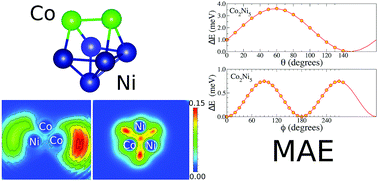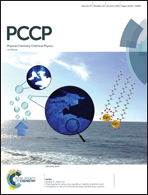Uniaxial magnetic anisotropy energy of bimetallic Co–Ni clusters from a first-principles perspective
Abstract
Along with the growing precision in the control of matter at increasingly smaller size scales, a field of research, based onto magnetic materials of technical interest, such as bimetallic clusters, has been developed in very recent years. Thereby, here, we report on a complete study of bimetallic clusters composed of cobalt and nickel with up to 7 atoms using ab initio methods in the GGA approach. We applied an unrestricted search method based on the tensor of inertia eigenvalues to find the most stable configurations of the clusters, obtaining a diverse set of structures with different geometric properties. We explored the effect of composition on the structural properties, the chemical stability, the magnetization and the magnetic anisotropy energy (MAE) of the so-obtained systems. Our results indicate that the behavior of the clusters is mainly governed by the Co–Co interaction and to a lesser extent by the Co–Ni and Ni–Ni interactions. Furthermore, for a given cluster size the magnetic moment increases by 2 μB/Co-substitution plus 1 μB/Ni-substitution coming from the cobalt and nickel core d-states, while in some cases unpaired hybrid s-electrons can also give rise to itinerant magnetism. These features have been analyzed with the help of a Jellium model and have important consequences for the magnetism and the magnetic anisotropy of the clusters. The magnetic behavior and MAE present complex and intriguing landscapes, which suggests the possibility of finely controlling the magnetic states, by tuning the cluster composition, aiming at technical implementation in fields such as molecular magnetism or quantum computation. In particular, cases such as Co6Ni, Co4Ni3, CoNi6 Co2Ni5 and Co3Ni3 present high relative stability and enhanced magnetic moments (around 10 μB), what makes them promising candidates for applications such as subnanometer magnetic information storage.



 Please wait while we load your content...
Please wait while we load your content...